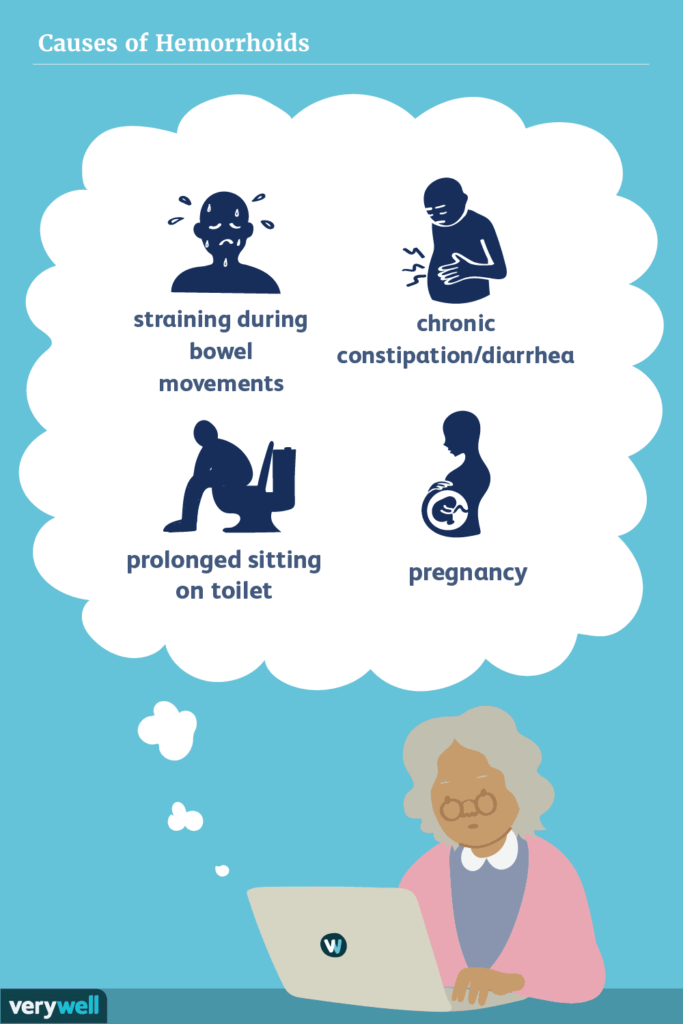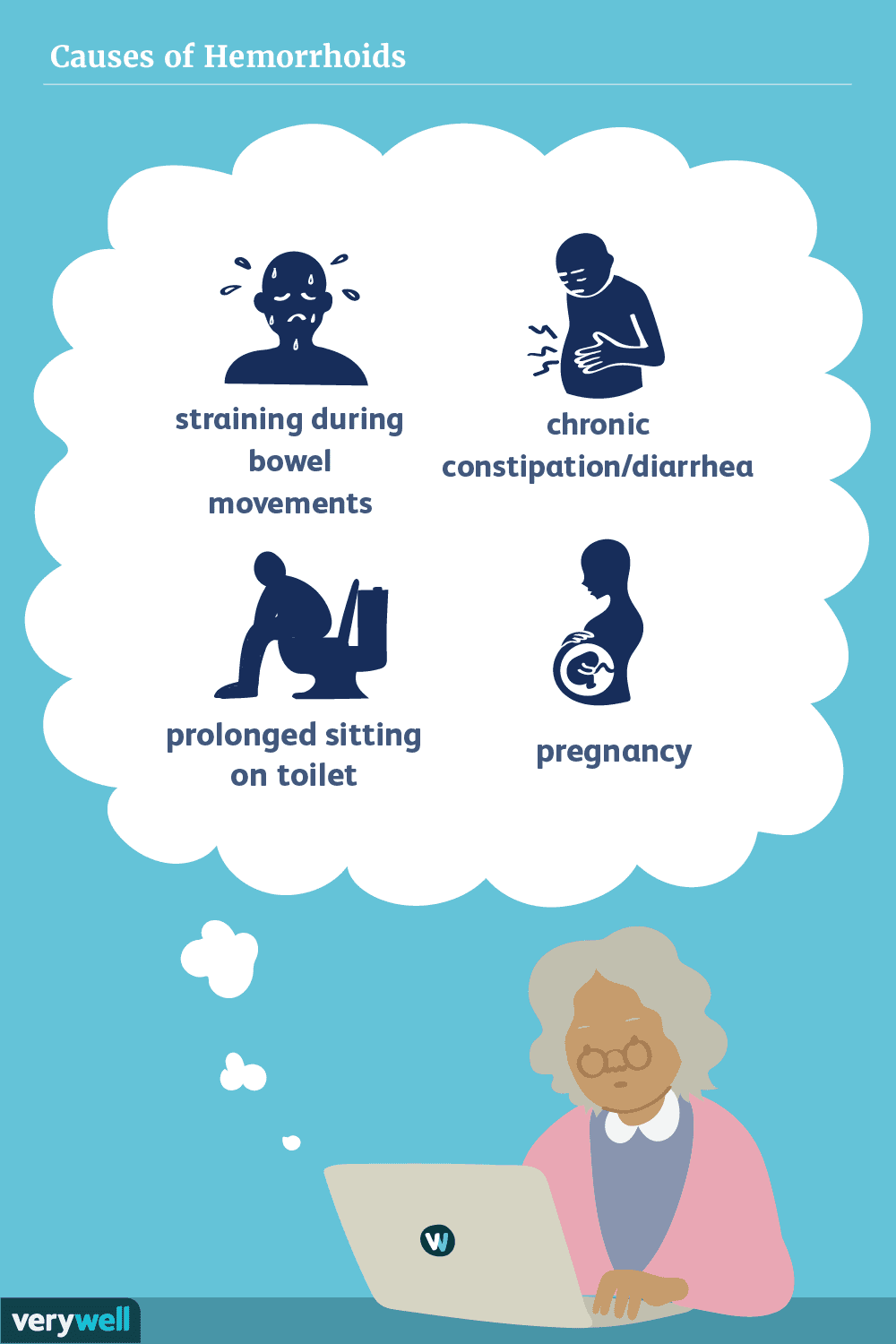As an Amazon Associate I earn from qualifying purchases.
Introduction
Hemorrhoids can cause discomfort and pain, making daily activities challenging. Hemorrhoids occur when veins in the anus and rectum become swollen and inflamed. Several factors may trigger hemorrhoids, and it’s essential to understand these factors to manage them effectively.
Straining during bowel movements
Straining during bowel movements can increase pressure in the veins in the rectal area, leading to hemorrhoids. Ensure that you’re eating a fiber-rich diet and drinking plenty of water to avoid constipation and straining during bowel movements.
Prolonged sitting or standing
Sitting or standing for extended periods can put pressure on the veins in the rectal area, causing hemorrhoids. Take breaks often and move around to ease the pressure and improve blood flow.
Pregnancy
The pressure of the uterus on the veins in the rectal area during pregnancy can cause hemorrhoids. Maintaining a healthy weight, exercising, and drinking plenty of fluids can help avoid pregnancy-related hemorrhoids.
Genetics
Hemorrhoids may run in families, and if you have a family history of hemorrhoids, you may be more likely to develop them.
Understanding the triggers for hemorrhoids can help you prevent flare-ups and manage symptoms more effectively. Be sure to consult with your healthcare provider if you experience persistent or severe symptoms.

Understanding the Triggers for Hemorrhoids
Dealing with hemorrhoids might not be the topic you find comfortable discussing, but it’s a common issue that affects a significant percentage of adults. Hemorrhoids are essentially swollen veins around your anus or lower rectum that can cause discomfort, pain, and sometimes bleeding. Fortunately, knowing what causes hemorrhoids can go a long way in preventing them from occurring or reducing their impact when they do.
What are Hemorrhoids?
Hemorrhoids refer to inflamed veins in the lower rectum or anus. The inflammation can result from different causes, such as a poor diet, poor posture, lack of physical activity, and chronic constipation or diarrhea. There are two common types of hemorrhoids: internal and external.
Types of Hemorrhoids
Internal hemorrhoids occur inside the rectum and are often painless, mostly causing discomfort and rectal bleeding. External hemorrhoids, on the other hand, manifest as painful lumps around the anus because they form outside the anal opening. Though not common, blood clots can develop in external hemorrhoids, making them more painful and requiring medical attention.
hemorrhoids can be triggered by different causes, but practicing good bowel habits such as eating well, staying active, and optimizing your bathroom posture can help prevent or reduce the occurrence of this painful condition.
If you have ever experienced hemorrhoids, you know how uncomfortable and painful they can be. Hemorrhoids are swollen veins in the rectum or anus, and they can cause itching, burning, and bleeding, among other uncomfortable symptoms. Understanding the triggers for hemorrhoids is essential to prevent them from occurring.
Causes of Hemorrhoids
Anyone can develop hemorrhoids, but some people are more prone to them than others. Hemorrhoids are commonly caused by excess pressure on the veins in the rectum and anus. This pressure can be caused by straining during bowel movements, prolonged sitting, obesity, pregnancy, and chronic constipation or diarrhea.
Symptoms of Hemorrhoids
Hemorrhoids can be internal or external, and the symptoms vary depending on their location.
Internal Hemorrhoids Symptoms
Internal hemorrhoids are located inside the rectum, and they may not cause any symptoms. However, if they become swollen, they can cause bleeding and prolapse, which means they protrude outside the anus.
External Hemorrhoids Symptoms
External hemorrhoids are located outside the anus, and they can be painful and itchy. They may also bleed if they become irritated.
Bleeding Symptoms
Bleeding is a common symptom of hemorrhoids, and it can occur during bowel movements or on wiping. The blood is usually bright red and may be seen on the toilet paper or in the toilet bowl.
understanding the triggers for hemorrhoids is crucial to preventing and managing this condition. If you are experiencing any of the symptoms mentioned above, it is essential that you see a healthcare provider for proper diagnosis and treatment.

If you suffer from hemorrhoids, you probably know how painful and uncomfortable they can be. Hemorrhoids, also known as piles, are swollen blood vessels in the rectum or anus. While there are different types of hemorrhoids, the symptoms are often similar, including itching, bleeding, and pain. Knowing the triggers that can cause hemorrhoids can help you prevent or manage the symptoms.
Risk Factors for Hemorrhoids
Hemorrhoids can affect anyone, but some factors can increase your risk, including age, pregnancy, a sedentary lifestyle, and obesity.
Age
As you get older, your risk of getting hemorrhoids increases. This is because the connective tissues in the rectum and anus weaken as you age, which can lead to the formation of hemorrhoids.
Pregnant women are also more prone to getting hemorrhoids. The weight of the baby and pressure on the pelvic area can cause the blood vessels to swell, leading to hemorrhoids.
Sedentary Lifestyle
A sedentary lifestyle can also increase your risk of getting hemorrhoids. When you sit for long periods, the blood flow to the rectum and anus is restricted, leading to swelling of the blood vessels.
Obesity
Obesity can also increase your risk of getting hemorrhoids. The excess weight can put pressure on the pelvic area, leading to the formation of hemorrhoids.
By understanding the triggers for hemorrhoids, you can make lifestyle changes that can help prevent or manage symptoms. Regular exercise, a healthy diet, and staying hydrated are some ways to reduce your risk of getting hemorrhoids.
Triggers for Hemorrhoids
Hemorrhoids are swollen veins located in the lower rectum and anus caused by pressure in these areas due to different factors such as pregnancy, sitting for long periods of time, obesity, and chronic diarrhea. In this article, you will learn about the common triggers for hemorrhoids.
Constipation
When you are constipated, you strain to pass a stool. This increases the pressure on your rectum, leading to hemorrhoids. Straining puts a lot of pressure on the walls of the rectum, causing the veins to bulge out.
Straining during bowel movements is one of the common triggers for hemorrhoids. This happens when you force your stool to come out. The repeated pushing can cause the veins in your rectum to become swollen and inflamed.
Poor Diet
A poor diet that lacks fiber and high in fats can lead to the development of hemorrhoids. When you eat foods that are low in fiber, you tend to strain during bowel movements, which increases the pressure on your rectum.
Lack of Fiber in Diet
A lack of fiber in your diet can cause constipation, which is a major trigger for hemorrhoids. Fiber-rich foods such as fruits, vegetables, and whole grains add bulk to the stool, making it easier to pass without straining.
By understanding the triggers for hemorrhoids, you can take steps to prevent them from occurring. Incorporate fiber-rich foods into your diet, avoid straining during bowel movements, and stay hydrated to reduce your risk of hemorrhoids. If you’re experiencing pain or discomfort while sitting, going to the bathroom, or even just in daily activities, it’s time to consider the possibility of hemorrhoids. Hemorrhoids are swollen veins located around the anus. They can cause itching, bleeding, and discomfort and can be an uncomfortable and painful experience to have.
Hemorrhoids are formed when pressure is put on the veins in the rectal or anal area. Pregnancy, obesity, constipation, sitting for long periods of time, or straining during bowel movements are common triggers for hemorrhoids.
Diagnosis of Hemorrhoids
If you’re experiencing symptoms of hemorrhoids, it’s essential to see a healthcare provider for diagnosis and treatment. There are a few ways a healthcare provider can diagnose hemorrhoids, including:
Physical Exam
A healthcare provider will examine the anus and rectum to assess the extent of the hemorrhoids. They may also perform a digital rectal exam to check for abnormalities.
Anoscopy
An anoscopy is an exam that uses a small, tubular instrument called an anoscope to look inside the anus and rectum. This procedure can help healthcare providers identify the location and size of the hemorrhoids.
Endoscopy
An endoscopy is a more invasive exam that looks at the large intestine, rectum, and anus using a small camera on a flexible tube. This may be needed if other exams don’t provide enough information.
understanding the triggers of hemorrhoids and getting proper medical diagnosis and treatment is key to managing this uncomfortable condition. Don’t hesitate to seek medical attention if you are experiencing discomfort or pain in the anal region.

Hemorrhoids are a common medical condition that can cause discomfort and pain. Understanding the triggers for hemorrhoids is vital because it can help you prevent them from occurring in the future. Hemorrhoids occur when the veins in your anal canal swell and become inflamed, causing discomfort and sometimes bleeding.
Several factors can cause hemorrhoids, but the most common include a lack of physical activity, chronic constipation, and diarrhea. Other causes include pregnancy, obesity, and straining during bowel movements. It is essential to know the cause of your hemorrhoids to determine the best treatment.
Treatment for Hemorrhoids
Treating hemorrhoids usually involves a combination of home remedies, medications, and sometimes, surgery.
Home Remedies
Home remedies include soaking in a warm bath, using ice packs to reduce swelling, and using over-the-counter creams or ointments to provide relief from itching and pain.
Medications
Over-the-counter medications like pain relievers and stool softeners can help alleviate the symptoms of hemorrhoids. In more severe cases, prescription medications may be necessary.
Surgery
Surgery is usually reserved for severe or persistent cases of hemorrhoids. Procedures like hemorrhoidectomy, rubber band ligation, or sclerotherapy are commonly used to treat hemorrhoids.
By understanding the triggers for hemorrhoids, you can take steps to prevent them from occurring in the future. Regardless, if you are experiencing symptoms of hemorrhoids, it is essential to speak with your doctor to determine the best treatment plan.

Conclusion
Now that you have a better understanding of the triggers for hemorrhoids, you can take the necessary steps to prevent them. A healthy lifestyle that includes a well-balanced diet and regular exercise can go a long way in minimizing your risk of developing hemorrhoids. Staying hydrated is also important, as dehydration can cause constipation and straining during bowel movements.
If you work a job that requires you to sit or stand for long periods, make sure to take breaks and give yourself time to stretch and move around. Avoid holding in bowel movements and try to establish a regular pattern of bowel movements each day.
If you do develop hemorrhoids, know that they are a common condition and there are many treatment options available. Over-the-counter creams and ointments can provide relief from discomfort, and in severe cases, surgery may be necessary.
The most important thing is to not be embarrassed or ashamed about seeking treatment for hemorrhoids. Remember, they are a common condition that affects many people at some point in their lives. By taking the right steps to prevent them, you can minimize your risk and enjoy a healthy, comfortable life.
Amazon and the Amazon logo are trademarks of Amazon.com, Inc, or its affiliates.
